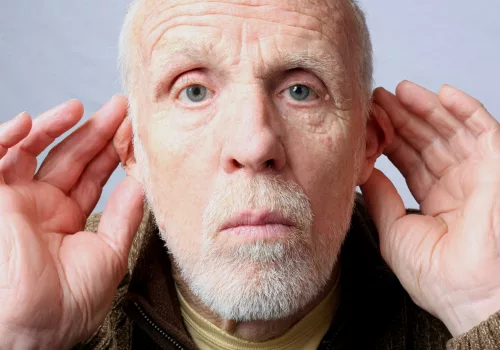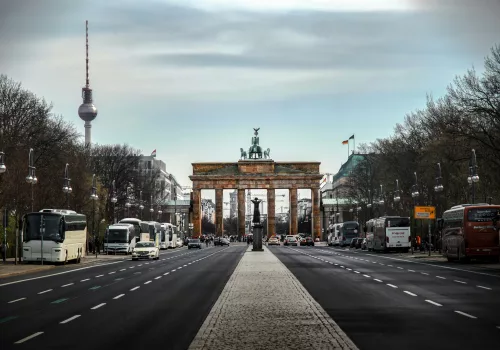Oktoberfest is one of the world’s most iconic festivals, recognized for its joyful atmosphere, steins of frothy beer, traditional Bavarian costumes, and hearty food. Every year, millions of people gather in Munich, Germany, and across the globe to take part in this extraordinary celebration. Though it is commonly associated with beer and revelry, Oktoberfest has a rich and multifaceted history that reflects Bavarian culture, traditions, and community spirit.
To understand why Germans celebrate Oktoberfest, it is essential to explore the festival’s origins, its evolution over centuries, and the significance it holds for both Bavarians and Germans as a whole. From its beginnings as a royal wedding celebration to its transformation into a global phenomenon, Oktoberfest is a symbol of heritage, unity, and the enduring love of festivity.
The Origins of Oktoberfest
The origins of Oktoberfest are steeped in history, romance, and community celebration. The festival’s story begins in Bavaria in 1810, a time when the region was forging a strong cultural identity within a rapidly modernizing Europe. At the heart of this tradition lies a royal marriage that captured the imagination and hearts of the Bavarian people, laying the foundation for what would become one of the world’s most famous festivals.
On October 12, 1810, Crown Prince Ludwig of Bavaria, who would later ascend to the throne as King Ludwig I, married Princess Therese of Saxony-Hildburghausen. This union was not just a romantic celebration but also a politically significant event, symbolizing alliances between two prominent German houses. The marriage was seen as an opportunity to strengthen ties within the German territories during a period of shifting borders and growing nationalism.
To commemorate the joyous occasion, a grand public festival was organized in Munich, inviting citizens from all over the region to partake in the festivities. Unlike private royal celebrations, this event was open to the people, reflecting the monarchy’s desire to foster unity and goodwill among the populace. The location chosen for the event was a large open field just outside Munich’s city gates, which was later named Theresienwiese (meaning “Therese’s Meadow”) in honor of the princess. This expansive area, with its rolling fields and proximity to the city, provided an ideal setting for the large crowds that gathered to celebrate.
The inaugural festival lasted for five days and was filled with activities that reflected the cultural and social life of early 19th-century Bavaria. Horse races were the main attraction, drawing enthusiastic crowds who came to witness the skill and speed of the competitors. These races, reminiscent of medieval tournaments, symbolized strength, bravery, and tradition, aligning with Bavaria’s proud heritage. Alongside the races, music and dancing filled the air, creating a lively and joyous atmosphere that brought people together. Communal feasting was another highlight, with long tables set up to accommodate locals and visitors alike, showcasing Bavaria’s famed hospitality.
The event was so well-received that Munich’s citizens and organizers decided to hold the festival again the following year. What began as a one-time celebration of a royal marriage quickly transformed into an annual tradition that resonated deeply with Bavarians. While the horse races remained the centerpiece of the early Oktoberfest celebrations, other activities were gradually introduced over the years, reflecting the evolving cultural, economic, and social landscape of Bavaria.
In the years that followed, the festival began to take on a life of its own, growing in size and scope. Agricultural exhibitions were added to showcase Bavaria’s farming achievements, while food stalls and beer stands started to appear, providing refreshments to the ever-increasing crowds. These additions laid the groundwork for the Oktoberfest we know today—a multifaceted celebration that encompasses not only Bavaria’s cultural heritage but also its deep-seated love of food, drink, and community.
The royal origins of Oktoberfest remain a point of pride for Bavarians, and the festival’s connection to Crown Prince Ludwig and Princess Therese is still celebrated. Theresienwiese, the original festival grounds, continues to be the central location for Oktoberfest, a testament to the enduring legacy of that first joyous celebration in 1810. Over two centuries later, the festival has evolved far beyond its humble beginnings, yet it retains the spirit of unity, festivity, and Bavarian pride that defined its origins.
Agricultural Significance
In its early years, Oktoberfest had strong ties to Bavaria’s agrarian society. As a predominantly rural region, Bavaria relied heavily on agriculture, and Oktoberfest became an occasion to celebrate the harvest and showcase the region’s agricultural prowess. A central feature of the early Oktoberfest was the agricultural fair, where farmers could exhibit livestock, crops, and innovations in farming techniques.
This focus on agriculture not only supported the local economy but also reinforced the connection between the people of Bavaria and their land. Although the agricultural aspect has become less prominent over the years, it remains an integral part of the festival every four years through the Bavarian Central Agricultural Festival, held alongside Oktoberfest.
The Evolution of Oktoberfest
Over the course of two centuries, Oktoberfest has grown from a regional celebration into a globally recognized festival. Its expansion reflects changes in Bavarian society, as well as the festival’s adaptability to evolving cultural and economic trends.
The Rise of Beer at Oktoberfest
Beer was not a central feature of the first Oktoberfest celebrations. Instead, wine and traditional Bavarian food played a more prominent role. However, as the festival grew in popularity during the 19th century, local breweries began to set up beer stalls to cater to the crowds. By the mid-1800s, beer became a defining element of the festival, and the first large beer tents were introduced in the 1890s.
Munich’s breweries, such as Augustiner, Paulaner, and Spaten, began producing special Oktoberfestbier, a slightly stronger and maltier version of their traditional lagers, specifically for the festival. This beer remains a cornerstone of Oktoberfest, served in the iconic one-liter steins (Masskrüge). Today, beer at Oktoberfest is regulated, with only six Munich-based breweries allowed to supply the festival, preserving its local roots.
Cultural Traditions and Bavarian Pride
Oktoberfest is a vibrant showcase of Bavarian culture and traditions. From the traditional costumes worn by attendees to the music, food, and dances, the festival celebrates the region’s unique heritage.
One of the most recognizable aspects of Oktoberfest is the traditional Bavarian attire. Men often wear lederhosen (leather trousers) paired with checked shirts and woolen socks, while women don dirndls, colorful dresses with aprons and bodices. These garments, once typical of Bavarian peasant life, have become symbols of regional pride and are embraced by locals and visitors alike during the festival.
Music is another essential part of the Oktoberfest experience. Brass bands perform a mix of traditional Bavarian folk songs, modern hits, and lively drinking anthems, creating an atmosphere of joy and camaraderie. Visitors often link arms and sway to the music, embodying the spirit of Gemütlichkeit, a German word that conveys a sense of warmth, friendliness, and belonging.
Food at Oktoberfest reflects Bavaria’s rich culinary heritage. Visitors feast on pretzels, schnitzel, roast chicken, sausages, and other hearty dishes that pair perfectly with beer. These foods highlight Bavaria’s agricultural roots and its love of simple, wholesome meals.
The Role of Oktoberfest in Bavarian Identity
Oktoberfest holds a special place in Bavarian culture, serving as both a celebration of the region’s unique identity and a unifying event that brings people together.
A Celebration of Tradition
For Bavarians, Oktoberfest is more than just a festival—it is a living expression of their cultural heritage. Bavaria, with its distinct dialect, customs, and history, has long been a proud and somewhat independent-minded region within Germany. Oktoberfest allows Bavarians to share their traditions with the world while reinforcing their sense of regional pride.
The festival’s longevity and popularity demonstrate its ability to adapt while staying true to its roots. Despite modernization, Oktoberfest remains a celebration of tradition, from the opening parade featuring horse-drawn beer wagons and costumed marchers to the mayor of Munich tapping the first keg and declaring, “O’zapft is!” (“It is tapped!”).
Building Community
Oktoberfest is also a celebration of community. The festival provides a space where people from all walks of life can come together, share food and drink, and enjoy each other’s company. For many Germans, attending Oktoberfest is a cherished tradition that fosters connections with family, friends, and neighbors.
The communal spirit of Oktoberfest is reflected in its seating arrangements, with long tables in beer tents encouraging strangers to sit together and strike up conversations. This sense of togetherness is a hallmark of the festival and one of the reasons it has such enduring appeal.
Oktoberfest and Its Global Influence
While Oktoberfest is deeply rooted in Bavaria, its influence has spread far beyond Munich. Today, cities around the world host their own versions of Oktoberfest, bringing elements of Bavarian culture to an international audience.
International Celebrations
Countries such as the United States, Canada, Australia, and Brazil have embraced Oktoberfest, often blending Bavarian traditions with local customs. For example, Kitchener-Waterloo Oktoberfest in Canada is one of the largest outside Germany, featuring Bavarian beer and food alongside Canadian cultural elements. Similarly, Cincinnati, Ohio, hosts Oktoberfest Zinzinnati, which includes traditional beer tents and bratwurst-eating contests.
These international celebrations highlight the universal appeal of Oktoberfest’s themes of joy, togetherness, and cultural exchange.
Preserving Bavarian Culture Abroad
For Germans living abroad, Oktoberfest serves as a way to maintain a connection to their heritage. German cultural organizations often organize Oktoberfest events to promote Bavarian traditions, ensuring that the festival’s spirit endures across generations and continents.
Final Words
At its heart, Oktoberfest is a celebration of Bavarian culture, community, and history. It honors the traditions and values that define the region, from its agricultural roots to its love of good food, music, and camaraderie. For Germans, Oktoberfest represents more than just beer and revelry—it is a symbol of identity, a gathering of friends and family, and a reminder of the enduring importance of tradition in an ever-changing world.
Oktoberfest also reflects the German spirit of Gemütlichkeit, fostering a sense of warmth and belonging that transcends cultural and national boundaries. Whether in Munich or abroad, the festival continues to unite people in celebration, ensuring its place as one of the most beloved and enduring traditions in German culture.






